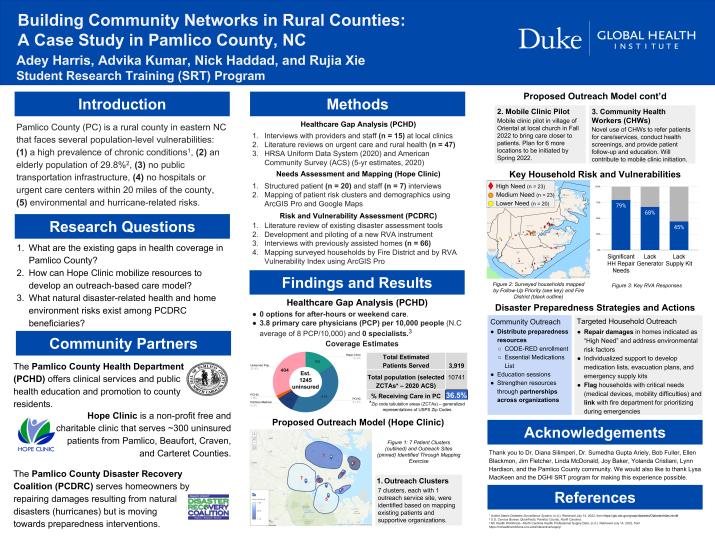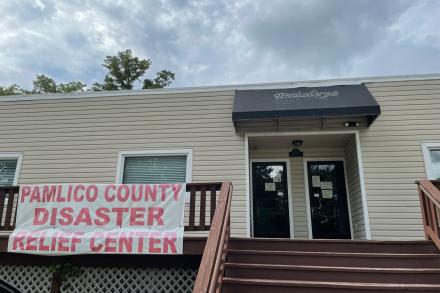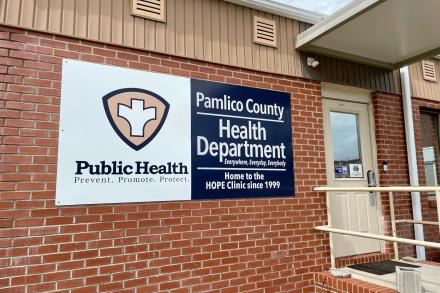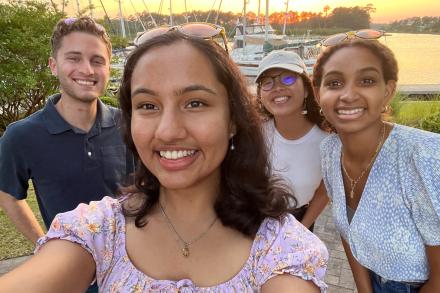Building Community Networks in Rural Counties: A Case Study in Pamlico County, NC

Project member(s):
-
Adey Harris
Advika Kumar
Nick Haddad
Rujia Xie
Faculty mentor:
Community partners:
-
Lynn Hardison, RN, CMA, MBA-HMT; Pamlico County Health Department
Bob Fuller; Pamlico County Disaster Recovery Coalition
Yolanda Cristiani, LPN; Hope Clinic
- Feedback? Contact the team
Building Community Networks in Rural Counties: A Case Study in Pamlico County, NC
Project overview
Forty-six million Americans, nearly 14% of the total population in 2020, live in rural areas. And many rural areas face shared significant challenges, including population-level vulnerabilities, workforce shortages, and financial barriers to accessing resources for healthcare and general well-being. Pamlico County is a rural county located in eastern North Carolina along the Neuse River and Pamlico Sound; with an estimated population density of 39.1 people per square mile, Pamlico County is more spread out than surrounding counties, which present significant transportation and access challenges when it comes to healthcare delivery. During Summer 2022, our team conducted in-person fieldwork in Pamlico County through the Student Research Training (SRT) Program. Following in the footsteps of the 2020-2021 Duke Bass Connections “Partners for Pamlico” Project Team, “Assessing an Innovative Community-based Response to COVID-19 in Rural North Carolina,” the SRT Pamlico County program was built on the previous team’s relationships with the COVID-19 Community Task Force, Hope Clinic, and the Pamlico County Health Department and has evolved those relationships based on current county needs.
Our project consisted of three main work-streams; we worked with the following organizations to identify health and home needs among vulnerable county populations:
- Pamlico County Disaster Recovery Coalition (PCDRC): an organization that serves Pamlico County homeowners by providing home repairs that address damages resulting from natural disasters, specifically hurricanes. Through a combination of grant funding and primarily volunteer support, the PCDRC has completed 150 eligible home repair projects since Hurricane Florence in 2018. Although the physical damages to homes have been addressed, the PCDRC recognized that many needs remain ongoing among the vulnerable households, some of which can be mitigated by preparing before natural disasters.
- Hope Clinic: a non-profit free and charitable clinic that currently serves 298 uninsured patients from four counties (Pamlico, Beaufort, Craven, and Carteret), with the majority of clients coming from Pamlico. To be eligible for services, patients must not qualify for Medicaid or Medicare and must meet income eligibility requirements (per annum, 200% of the Federal Poverty Level or less). Building off the Bass Connections recommendations and staying true to Hope Clinic’s strategic plan, we interviewed patients and staff and created a patient mapping tool to understand current needs and visualize areas of risk within the county. We then worked to develop a potential community-based outreach care model based on these findings that incorporates mobile health units, community health workers (CHWs), and expanded patient education efforts.
- Pamlico County Health Department: Our project team partnered with the Pamlico County Health Department to assess unmet health needs in the county by conducting a care-gap analysis and proposing solutions to expand the healthcare coverage of vulnerable patient populations, including the broad need for urgent care.
Through qualitative interviews, semi-structured community member conversations, analysis of existing databases, and original data collection in the form of a Risk and Vulnerability Assessment, we produced three sets of recommendations for our community partners. We hope to use these results and the feedback we received to refine our recommendations, produce clear action plans to implement recommendations, and follow up on our proposed next steps from the summer reports. To learn more about our work, our community partners, and DGHI's "Local is Global" initiative, read DGHI's profile on Pamlico County and our work.
Media and resources

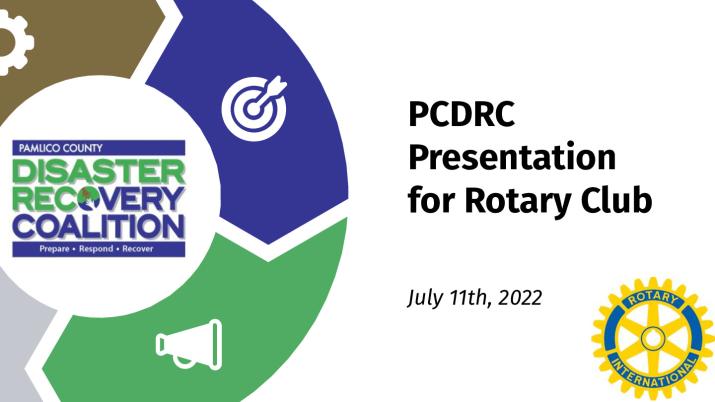
Last updated on June 26, 2023
